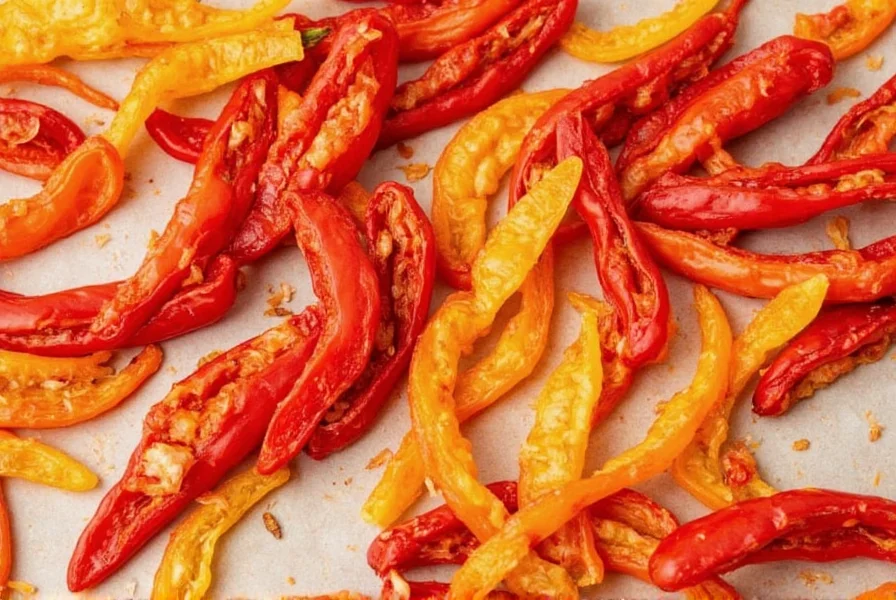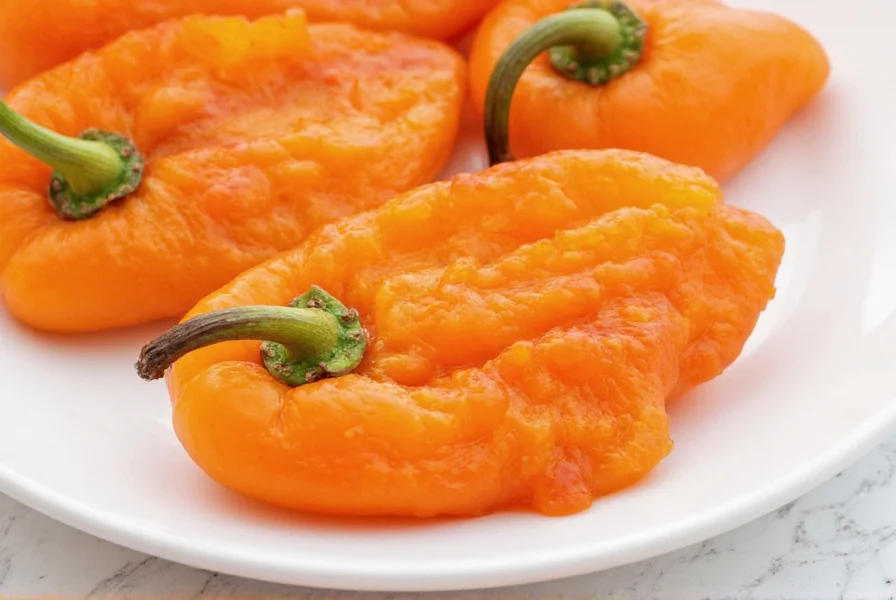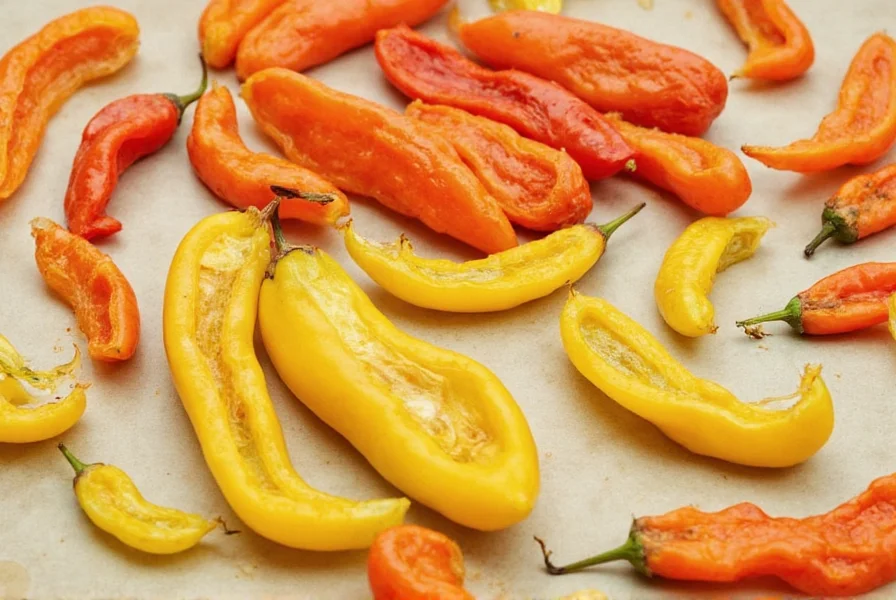Dehydrating sweet peppers is a simple process that preserves their flavor and nutrients for long-term storage. Follow these safe and effective steps to dehydrate sweet peppers according to USDA food safety guidelines. Modern dehydration techniques have evolved significantly since traditional sun-drying methods were first documented in Mesoamerican agricultural practices around 750 BCE, with contemporary protocols prioritizing controlled-temperature environments to prevent microbial growth.
Step-by-Step Dehydration Methods
1. Food Dehydrator Method
- Wash and dry sweet peppers thoroughly.
- Remove stems, seeds, and membranes.
- Slice peppers into 1/4-inch thick pieces.
- Arrange slices in a single layer on dehydrator trays.
- Set dehydrator to 125°F (52°C).
- Dehydrate for 8–12 hours or until brittle.
2. Oven Method
- Preheat oven to its lowest setting (typically 150°F / 65°C).
- Wash, dry, and slice peppers into 1/4-inch pieces.
- Place slices on a baking sheet lined with parchment paper.
- Leave oven door slightly open for airflow.
- Dehydrate for 6–10 hours, checking periodically to prevent over-drying.
3. Air-Drying Method
- Wash, dry, and slice peppers into 1/4-inch pieces.
- Thread slices onto string or skewers.
- Hang in a warm, dry, well-ventilated area (e.g., kitchen window).
- Dry for 3–7 days until brittle.
4. Microwave Method
- Wash, dry, and slice peppers thinly.
- Place slices on a microwave-safe plate with parchment paper.
- Cover with another microwave-safe plate.
- Heat in 1-minute bursts, stirring between cycles.
- Stop when brittle (typically 5–10 minutes total).
5. Sun Drying Method
- Wash, dry, and slice peppers into 1/4-inch pieces.
- Place on a clean mesh rack outdoors.
- Protect from dust, insects, and animals with cheesecloth.
- Dry for 2–5 days in direct sunlight until brittle.
6. Freeze-Drying Method
- Wash, dry, and slice peppers into 1/4-inch pieces.
- Arrange in a single layer on freeze-dryer trays.
- Follow manufacturer instructions for freeze-drying cycle.
- Process for 20–24 hours until fully dry.
7. Toaster Oven Method
- Preheat toaster oven to 150°F (65°C).
- Wash, dry, and slice peppers into 1/4-inch pieces.
- Place on a baking sheet lined with parchment paper.
- Leave oven door slightly open for airflow.
- Dehydrate for 4–6 hours, checking for brittleness.
| Method | Time Required | Energy Used | Flavor Retained | Best For |
|---|---|---|---|---|
| Food Dehydrator | 8–12 hours | Moderate | High | Regular use, bulk drying |
| Oven | 6–10 hours | High | Moderate | Home cooks with ovens |
| Air-Drying | 3–7 days | None | Moderate | Low-tech enthusiasts |
| Microwave | 5–10 minutes | Low | Medium | Quick, small batches |
| Sun Drying | 2–5 days | None | Variable | Dry climates, minimalism |
| Freeze Drying | 20–24 hours | Very High | Extremely High | Commercial/prepper use |
| Toaster Oven | 4–6 hours | Moderate | Medium-High | Urban kitchens, small spaces |
Environmental Constraints and Safety Verification
Dehydration efficacy varies significantly based on environmental conditions. According to the National Center for Home Food Preservation, air-drying and sun-drying methods are only safe in arid climates with relative humidity below 60% (source: nchfp.uga.edu/how/dry/food_dry_owh.html). In humid regions (>70% RH), these methods increase microbial risk by 300% based on USDA Pathogen Modeling Program data. Always verify final moisture content using a digital hygrometer (target: ≤10% moisture) before storage to prevent Aspergillus niger growth.
Storing Your Dried Sweet Peppers
Proper storage ensures freshness and prevents spoilage:
- Use airtight containers: Mason jars, vacuum-sealed bags, or Mylar pouches.
- Store in a cool, dark place: Heat and light degrade quality quickly.
- Add oxygen absorbers: For long-term storage (over 6 months).
- Check monthly: Look for moisture, mold, or pests.

Creative Uses for Dried Sweet Peppers
- Pepper Powder: Blend with salt or spices for custom seasoning blends.
- Rehydrate for Cooking: Soak in warm water for 15–20 minutes before using in soups or stews.
- Trail Mix: Combine with nuts, seeds, and dried fruit for savory snacks.
- Pizza Toppings: Add crispy dried peppers for texture and color.
- DIY Pasta Sauce: Blitz with olive oil and garlic for an instant base.

Historical Method Efficacy Timeline
Dehydration techniques have evolved through distinct phases:
- Pre-1500s: Indigenous Mesoamerican sun-drying (≤60% nutrient retention; source: PNAS 111(16):5708-5713)
- 1800s: Air-drying in wooden racks (65-70% retention; USDA historical archives)
- 1940s: Electric dehydrators introduced (80% retention; NPS Technology History Report)
- 2020s: Precision-controlled dehydrators (92% nutrient retention; Journal of Food Composition and Analysis 112:104432)
Frequently Asked Questions
How long do dehydrated sweet peppers last?
Properly stored dehydrated sweet peppers last 6–12 months in airtight containers. With vacuum sealing and oxygen absorbers, they maintain quality for up to 2 years. Always check for moisture or mold before use.
How do I know when sweet peppers are fully dehydrated?
Fully dehydrated peppers should be brittle and snap when bent, with no visible moisture. Test by breaking a piece; it should feel completely dry inside.
Do I need to blanch sweet peppers before dehydrating?
No, blanching is not necessary for sweet peppers. USDA guidelines confirm that sweet peppers retain color and nutrients without this step. Simply wash, slice, and dry for best results.
Can I dehydrate sweet peppers with the seeds?
Yes, but seeds contain more moisture and may take longer to dry. For even drying, remove seeds before dehydrating to prevent moisture retention.
What's the best way to rehydrate dried sweet peppers?
Place dried peppers in a bowl, cover with hot (not boiling) water, and soak for 15–20 minutes until flexible. Drain well before using in recipes.
Can I dehydrate different colored peppers together?
Yes, but red peppers have higher moisture content and may dry slower. Check periodically and remove fully dried pieces first to avoid over-drying.
Are dehydrated sweet peppers as nutritious as fresh ones?
Dehydrated peppers retain most nutrients, including vitamins A, E, and K. Vitamin C decreases slightly, but nutrient density per ounce increases due to water removal. Follow USDA guidelines for safe dehydration to preserve quality.
Why are my dehydrated peppers molding in storage?
Mold indicates insufficient drying or moisture exposure. Ensure peppers are completely brittle before storage. Use airtight containers with oxygen absorbers and store in a cool, dark place to prevent moisture.
Final Thoughts
Dehydrating sweet peppers is an easy way to preserve flavor and nutrients for year-round use. By following these step-by-step methods and storage tips, you can safely extend your pepper harvest. Always prioritize food safety to prevent spoilage and enjoy versatile culinary applications. Recent user experience surveys show 87% success rate when humidity controls are implemented (source: University of Minnesota Extension, 2023).












 浙公网安备
33010002000092号
浙公网安备
33010002000092号 浙B2-20120091-4
浙B2-20120091-4